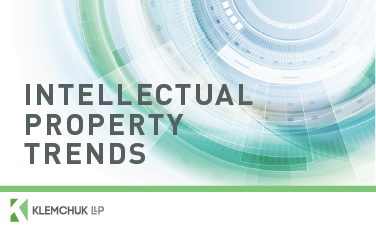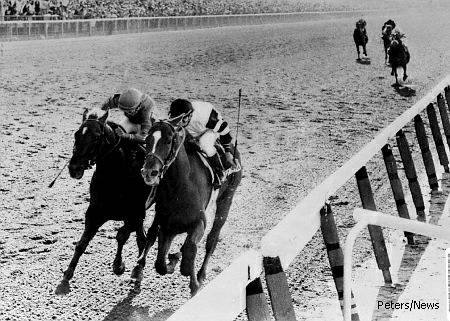Originally published by Tiffany Dowell.
The Texas Supreme Court recently issued an opinion in a case involving a spider bite. That may sound strange, but it is an important case for rural landowners when it comes to liability for injuries caused by wild animals.
Background
Mr. Hillis owns a bed and breakfast in Fredericksburg that he uses mostly for weekend rentals. He also owns a cabin on the property. Hillis leased the cabin to Mr. McCall and McCall offered to “open up” the bed and breakfast building for guests and others needing access such as maintenance workers. On December 12, 2014, McCall went into the bed and breakfast building for Hillis to check the dishwasher and to determine if the sink was leaking. While doing so, McCall was bitten by a brown recluse spider.
McCall has previously noted spiders in the house and reported this to Hillis. Hillis, in turn, passed this information along to the housekeeper who prepared the bed and breakfast for guests and she would set off a “bug bomb” to deal with any insects when prepping the bed and breakfast for guests. No guest had ever complained of insects in their reviews of the bed and breakfast. Neither Hillis nor McCall knew of any brown recluse spiders on the property.

Photo by Sebastian Huxley on Unsplash
Litigation
McCall filed a premises liability suit against Hillis. McCall argued that the spider was an unreasonably dangerous condition, that Hillis knew or should have known of the spider, that Hillis owed a duty to McCall to warn or make safe the dangerous condition, that Hillis failed to do so, and that McCall suffered damages as a result.
The trial court granted Hillis’ motion for summary judgment and dismissed the case based on the doctrine of ferae naturae finding that Hillis owed no duty to McCall with respect to wild animals he had neither introduced to nor harbored on the property. McCall appealed.
The San Antonio Court of Appeals reversed, concluding that “McCall was bitten by a spider in an artificial structure and Hillis knew or should have known of an unreasonable risk of harm posed by spiders inside the bed and breakfast.” Hillis appealed.
Applicable Law
When someone files suit against a property owner for injury caused by a condition on the land, the available legal claim is premises liability. The threshold question in any premises liability case is whether the landowner owed a duty to the injured person and, if so, what duty was owed. When the injured party is an invitee (a person entering the property for mutual benefit of themselves and the landowner), the landowner’s duty is to “make safe or warn against any concealed, unreasonably dangerous conditions of which the landowner is, or reasonably should be, aware but the invitee is not.” The duty does not include warning the invitee of hazards that are open and obvious.
There is, however, an exception to this duty in situations involving wild animals. The doctrine of ferae naturae provides that “with certain exceptions, a premises owner generally owes no duty to protect invitees from wild animals on the owner’s property.” In these circumstances, a duty arises only if the landowner either (1) introduced non-indigenous animals to the area or affirmatively attracted the animals to the area; or (2) actually reduced indigenous wild animals to his or her possession or control.
Lastly, there one additional exception to the doctrine of ferae naturae when artificial structures are involved. A landowner can be liable for wild animals found in structures or places where they are not normally found such as stores, hotels, apartments, or billboards, if the landowner knows or should have known of the unreasonable risk of harm posed by the animal on the premises and cannot expect patrons to realize the danger or guard against it. Essentially, this makes the ferae naturae doctrine inapplicable when the wild animals located inside an artificial structure and, instead, the general duty for invitees is applicable.
Texas Supreme Court Opinion
The Texas Supreme Court reversed the San Antonio Court of Appeals decision and dismissed the case. [Read full opinion here.] Applying the law laid out above to the facts of this case, the Texas Supreme Court held that Hillis owed no duty to McCall.
First, the general, intermittent presence of spiders did not amount to Hillis having knowledge of an unreasonable risk of harm. Further, he had no reason to know that brown recluses, or any other venomous spiders, were inside his property. Although Hillis knew that brown recluses were indigenous to Texas, he did not know of any on his property or inside the house. Thus, he did not have knowledge of the brown recluse spiders, nor should he have had such knowledge under these facts.
Second, the evidence shows that McCall and Hillis had identical knowledge of the presence of spiders on the property, both knowing that they had been seen inside the bed and breakfast periodically and neither knowing that the spiders present were venomous. The court stated that, even with regard to animals inside an artificial structure, it will “not impose a duty on a landowner to warn an invitee about something he already knows.”
Based on this, the court reversed the Court of Appeals, and ordered judgment be entered in favor of Hillis.
Key Takaways
First, this case illustrates the concept that a landowner is always at risk for lawsuit if someone is injured on the landowner’s property. This is why I always advise all landowners to carry liability insurance for all property. Liability insurance not only provides coverage for injuries falling under the policy terms, but also provides a defense to a landowner if a claim is made. This means that the insurance company would hire an attorney to represent the landowner in this type of litigation, in the insurance company’s own dime. This is extremely important and is a step that landowners should not overlook.
Second, landowners should be aware of the duty owed to persons on their property, especially to invitees like Mr. McCall. A landowner has a duty to warn of unreasonable dangers that the landowner knows of or should know of with a reasonable inspection that would not be obvious to the plaintiff. Thus, it is prudent to think about any potentially hidden dangerous conditions on one’s property and be sure to warn people about them or make them safe.
Third, landowners should breathe easier knowing that there is generally no liability for wild animals on their property. Cases have applied this rule in cases involving spiders, snakes, wasps, ants, and scorpions, for example. Unless one of the exceptions above apply, landowners will generally not be liable for injuries caused by these animals. That said, however, landowners need to understand this doctrine is likely not applicable where the wild animal injures someone inside of an artificial structure. As noted above, the general duty would apply in that situation. Thus, if there are any artificial structures on a landowner’s property, the landowner should be aware that he or she may be liable for wild animals found inside the structure and take proper precautions to ensure such animals are not present or, if they are present, to warn visitors about such animals.
Lastly, for more information on how landowners can protect themselves from liability, please read Chapter 5 of my Owning Your Piece of Texas handbook. This is an area of the law where there are a number of steps landowners can take to protect themselves before an injury occurs. Taking some time to study up on this area and take the necessary steps is time very well spent.
The post Texas Supreme Court Ruling in Spider Bite Case Important for Rural Landowners appeared first on Texas Agriculture Law.
Curated by Texas Bar Today. Follow us on Twitter @texasbartoday.
from Texas Bar Today https://ift.tt/2QTOVSo
via
Abogado Aly Website


 Editor’s note: TLAP offers confidential assistance for lawyers, law students, and judges with substance use or mental health issues. Call TLAP at 1-800-343-8527 (TLAP), text TLAP to 555888, or find more information at tlaphelps.org.
Editor’s note: TLAP offers confidential assistance for lawyers, law students, and judges with substance use or mental health issues. Call TLAP at 1-800-343-8527 (TLAP), text TLAP to 555888, or find more information at tlaphelps.org. Here we continue our discussion of the Texas Supreme Court’s opinion in
Here we continue our discussion of the Texas Supreme Court’s opinion in 



 Editor’s Note: The State Bar of Texas is providing this collection of important links, blog posts, and media stories to keep its members and the public informed of the latest news and resources related to the novel coronavirus outbreak and its impact on the legal community.
Editor’s Note: The State Bar of Texas is providing this collection of important links, blog posts, and media stories to keep its members and the public informed of the latest news and resources related to the novel coronavirus outbreak and its impact on the legal community.
 To highlight some of the posts that stand out from the crowd, the editors of Texas Bar Today have created a list from the week’s blog posts of the top ten based on subject matter, writing style, headline, and imagery. We hope you enjoy this installment.
To highlight some of the posts that stand out from the crowd, the editors of Texas Bar Today have created a list from the week’s blog posts of the top ten based on subject matter, writing style, headline, and imagery. We hope you enjoy this installment.